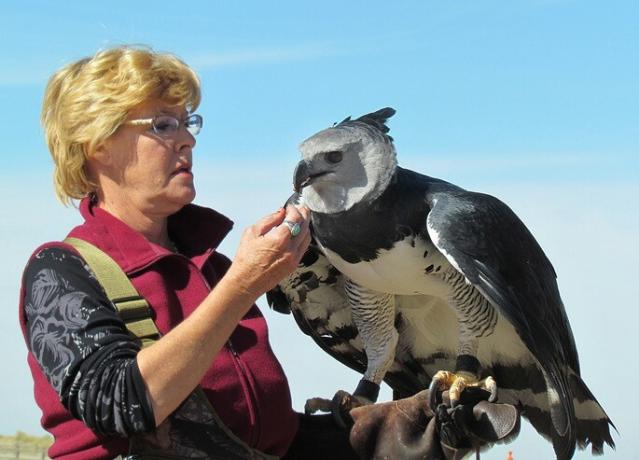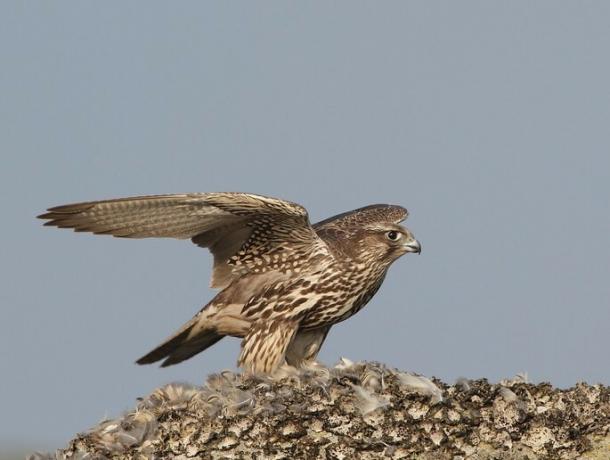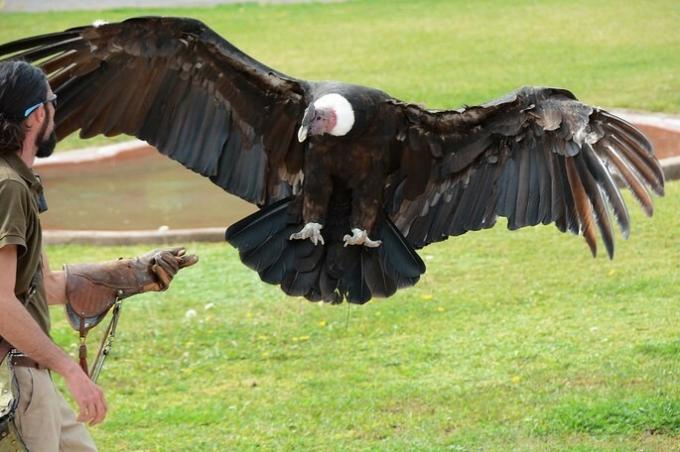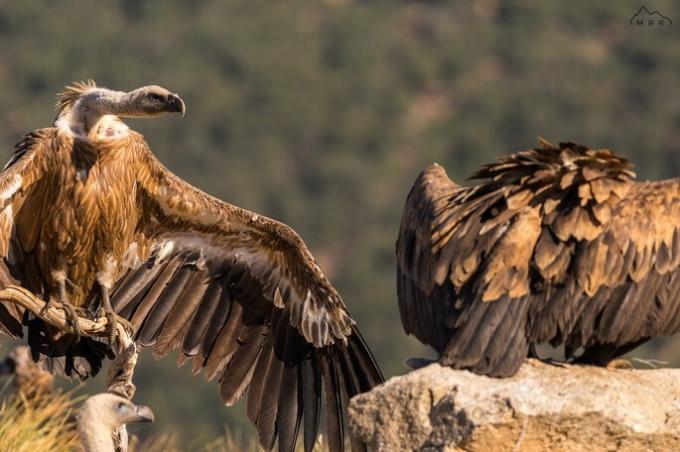Bird of prey is the name given to hundreds of species of carnivorous birds such as hawks, eagles and hawks. These birds are known to abduct their prey, which explains their name (“prey” means robbery, plunder). In other words: birds of prey use their huge claws to catch and take away their prey.
birds of prey have some features very specific physics: sharp hooked beaks, strong claws, and very keen eyesight and hearing. Some species are diurnal (they hunt during the day), such as eagles. Others are nocturnal, like owls.
eagles
Eagles are large birds of prey and are among the largest birds on the planet. They are famous for their excellent eyesight, capable of detecting prey from 3 km away! they belong to the family Accipitridae, which also includes other birds, such as hawks and vultures.
There are about 70 species of eagles, most of which can be found in Europe, Asia and Africa. Only two species are found in North America: one of them is the American Eagle (Haliaeetus leucocephalus), symbol of the United States.

There are nine species of eagle in Brazil, among which the Harpy harpy, popularly known as the harpy eagle, which occurs in some parts of the Atlantic Forest and in the Amazon. it is about the biggest eagle species in the world, reaching more than one meter in length and two meters in wingspan (distance between the tips of the two wings)!
the females of Harpy, which are larger than males, weigh up to 9 kg. With its claws up to 7 cm in length, the Harpy can capture relatively large prey such as sloths and monkeys.

Read more about the Definition of Eagle.
Hawks
Hawks belong to the same family as eagles (Accipitridae) and are very similar to them physically. An important difference between eagles and hawks is that they are smaller (most species weigh less than 1 kg). Furthermore, hawks are less powerful and imposing than the eagle.
Like eagles, hawks are diurnal animals: they are active during the day, spending much of their time soaring over the forest, waiting for the best time to launch one of its prey, usually small animals such as lizards, rodents, birds, frogs and insects.
There are about 250 species of hawks in the world. In Brazil alone, there are more than 40 species, among which the hawk (Heterospizias meridionalis), which occurs throughout the Brazilian territory. Also known as leather coat, the caboclo hawk is large compared to other hawks: it reaches 65 cm in length.

hawks
Compared to eagles, falcons are small birds. They have a short beak and long, pointed wings. They are the smallest birds of prey in the world. The largest individuals measure up to 60 cm. Most species do not exceed half a kilo.
Due to their size and the aerodynamic shape of their wings, falcons are very birds of prey. agile, capable of promoting extremely fast attacks. Unlike eagles and hawks, hawks are not gliding birds. When they attack, they shoot into the air like arrows to capture their prey (usually insects, lizards, rodents and other birds).
Another characteristic of hawks is a bulge in the beak (tomial tooth) that serves to break the neck of its victims. This differentiates hawks from hawks and eagles, which kill their prey by piercing them with their claws.
Worldwide, there are about 60 species of falcons, of which 20 can be found in Brazil. The largest species of falcon in the world is the gyrfalcon (Falco rusticolus), which occurs in cold regions of the northern hemisphere. Females, which are larger than males, can reach 60 cm in length and weigh more than 2 kg.

owls
owls are predominantly nocturnal birds of prey. There are more than 220 species of owls (order Strigiformes), distributed in almost every region of the world, from the tropics to the Arctic.
Owls have unmistakable physical characteristics: their heads are large in relation to their bodies and round, their face is flat, their eyes are large and forward-facing. Its beak is small but very sharp, and the same can be said for its claws, with which they capture snakes, lizards, fish, rodents and insects.
A very curious characteristic of owls is their ability to rotate the neck 170º. By way of comparison, humans can only turn their heads 80 degrees.
This extraordinary ability of owls is due to the fact that these birds have fixed orbits, which prevents them from rotating their eyeballs. Owls' head rotation is an evolutionary adaptation to compensate for their limited visual field.
There are 23 species of owl in Brazil. A very common one is the burrowing owl (Athene cunicularia), which has both nocturnal and daytime habits and can be seen throughout the country. Its popular name refers to the habit of installing their nests in holes in the ground.

Read more about the Definition of Owl.
vultures
the vultures are scavenger birds - that is, they feed predominantly on dead animals. Therefore, they are known as “nature's janitors”. Some species of vultures can hunt small animals, such as snakes and birds, in addition to taking advantage of injured and sick animals.
To locate their food in nature, vultures use mainly their super sharp eyesight, capable of detecting dead animals miles away. Some species, such as the red-headed vulture, can locate carcasses through their sense of smell.
Vultures are medium and large birds: they weigh between 1 and 2 kg and have a wingspan of about 1.80 m. belong to the family Cathartidae, which the condors are part of. The five species of vultures can be found in Brazil.
The biggest and most magnificent of all species is the King vulture (sarcoramphus pope), which weighs between 3 and 4 kg and whose wingspan exceeds 2 m! The king vulture occupies the top of the vulture hierarchy, having a predominance over the other species when devouring a carcass.

Read more about the meaning of vulture.
condors
there are only two species of condor: the Andean condor (vultur gryphus) and the Californian condor (gymnogyps californianus). As their names suggest, both species can only be found in the Americas.
They are from the same family as the vultures (Cathartidae) and, like them, they are carrion animals. Endowed with a great ability to glide, they are able to fly over hundreds of kilometers in a single day in order to locate their food (dead animals).
You Andean condors they are among the largest flying birds in the world, reaching up to three meters of wingspan and weighing up to 15 kg! This gigantic species occurs in the Andes Mountains and can be found on the Chilean coast, where it feeds on dead marine animals. Regarding food, the Andean condor prefers the carcasses of large animals, such as llamas, alpacas and other mammals. On the coast, they feed on fish carcasses, seals, sea lions and dolphins.

vultures
Like vultures and condors, vultures are scavenger birds of prey - that is, they feed on the carcasses of dead animals. But only exist in Europe, Asia and Africa, while vultures and condors are restricted to the Americas, earning them the nickname of New World vultures.
Despite the enormous similarities, including physical ones, vultures do not belong to the same family as vultures and condors. they are family Accipitridae, which includes diurnal birds of prey such as eagles and hawks.
The similarities with New World vultures, although not genetic, are explained by the fact that these birds evolved in a very similar way. Despite inhabiting different continents, New and Old World vultures play similar roles in nature.
The biggest vulture in Europe is the black vulture (Aegypius monachus), which can reach three meters of wingspan, one meter in height and weigh up to 14 kg! As a result, they are slightly smaller than Andean condors.

